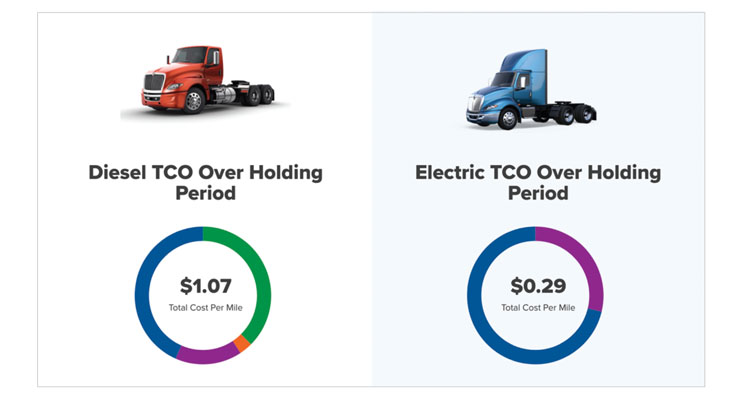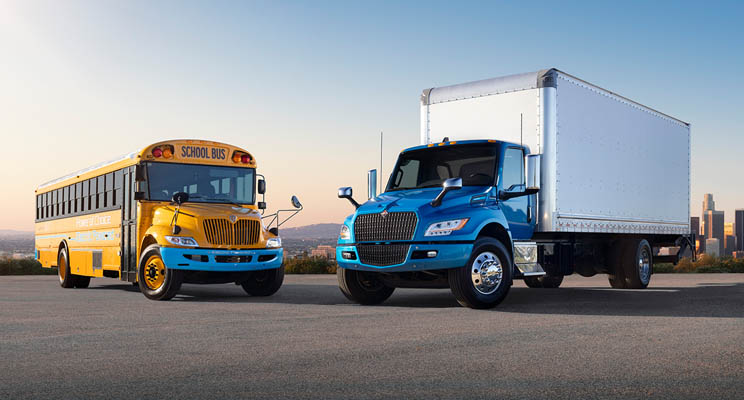Building Your Zero-Emissions Fleet: 3 Ways to Start Now
Jason Gies, Vice President eMobility, International Truck
Preparing for fleet electrification can be daunting with so much to learn, multiple details to keep track of and many decisions to be made. I compare it to building a house. Before you can even lay the foundation, permits need to be pulled, drawings completed, and you need to find the best contractor. It isn’t so much one big project as dozens of smaller ones that need to be tackled in the right order.
The same rules apply when it comes to building your zero-emissions strategy. Here are three things you can focus on right now to make a great start:
1: Understand Energy
We never have to teach our customers how to put diesel into a vehicle, but we do have to provide education around charging battery electric vehicles (BEVs). It starts with understanding the kilowatt-hour: What kind of power is needed to right-size your facility for the future?
You might be thinking of adding one or two zero-emissions vehicles (ZEVs) today. But what does the five-year or a ten-year plan look like? Are your routes appropriate for electrification? When should you engage your utility company to do an upgrade — which could take 18 to 24 months? Should you install solar if it’s in the right location?
To help get you started, we developed a Remote Site Survey Tool. This simple 10-12 question process looks at energy coming into your building, utility bills and panel loads. You’ll get answers about what’s possible in your facility — today, and for tomorrow. We’ve helped over 100 dealers use this tool to gain a better understanding of their charging needs. It can help you, too. Contact us to get started.
There’s much more to learn about building a sustainable fleet, from safety to performance, recommended chargers — and the potential for charging as a future revenue stream. For answers to our customers’ most pressing industry questions plus a glossary of terms, visit our FAQ page.

2: Learn About Total Cost of Ownership (TCO)
Compared to diesel trucks and buses, clean, BEVs have a higher initial acquisition cost but much lower operating costs over the lifetime of the vehicle — which sounds terrific until you start asking how you can afford that upfront investment.
Applying for grant funding will be key. This is a tricky subject because, while there are some similarities, each grant is written with specific compliance requirements and is executed in its own way, with specific provisions for trucks versus buses.
Our dedicated grants team can help you sort through all the details. Additionally, through existing dealer channels and our monthly newsletter, we advise customers on what’s available, key websites to visit, and how to apply.
With grants we take a “teach-the-customer-how-to-fish” approach: Instead of baiting the hook each and every time, we teach the ins and outs of the funding process so you can apply for and manage grants by yourself later on, with confidence.
Curious about EV costs? Try our Total Cost of Ownership (TCO) Calculator. Using your data, this online tool will help you understand how diesel compares to BEV costs for your business. If the numbers look appealing, schedule a formal route analysis with our consultants to dive deeper and craft a transition strategy.

Battery-electric power will be competitive with diesel across all key metrics and for all major applications — it’s only a matter of time.
More zero-emissions choices are coming to market every day. EV batteries continue to get better and cost less. Consider that the cost of lithium batteries has declined 90% since 2010. Although EVs are currently more expensive, improvements in technology and increasing volumes will bring TCO advantage to EVs within four to seven years, depending on the application.
ZEVs with limited or predictable routes are leading the way followed by vehicles with longer ranges. The shift to battery electric vehicles will start with school buses, followed by medium duty trucks, then regional haul and then long haul.
3: Prepare for Training
BEVs can offer equal or better performance and less maintenance than diesel — a superior experience for drivers and fleet managers alike. But with all the changes electrification brings, training is more important than ever. To start, customers need to understand basic safety, charging and infrastructure.
We’ve implemented a totally new qualification process for our dealers to sell and service ZEVs, including onsite training and certification at our Woodridge, Illinois facility. Virtual sales and service training is available through our dealership portals.
For a deep dive, customers, dealers and industry stakeholders are invited to visit our facility in Rochester Hills, Michigan. Here you can learn how to plan, execute, and optimize ZEVs and investments for the entire lifecycle.
Our industry experts are on the road and coming to a city near you.
Visit the Navistar NEXT Mobile Experience, an immersive exploration of ZEV products and services that includes interactive learning zones with augmented reality, 3D-printed models, videos, and hands-on demonstrations.

In a three-hour session, learn all five steps of the transformation to zero emissions.
Our experts will guide you through consulting, charging, constructing, connecting and conserving. We call it our 5Cs approach. Learn more and request a visit.
Charge Ahead: Start NOW
Transitioning to zero emissions is the right thing to do, and there’s a right way to do it. My recommendation is to start now, begin with the basics. Get comfortable with the technology so you can make smart choices for your business.
The more you learn, the better you’ll be able to anticipate challenges going forward. So, charge ahead! We’re here to support you every step of the way.
